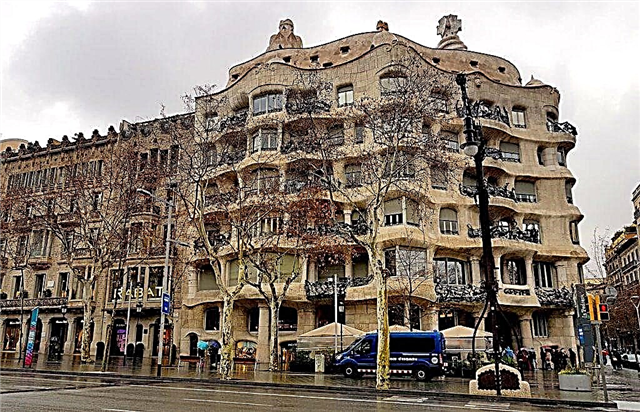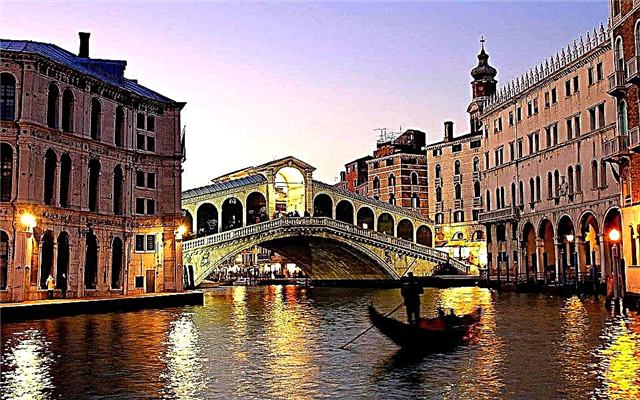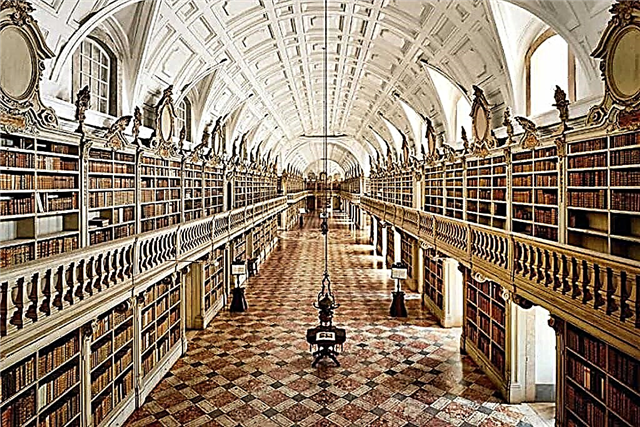Address: Russia, Moscow, Krestyanskaya square
Foundation date: 1490 year
Main attractions: The Transfiguration Cathedral, the Church of the Intercession of the Most Holy Theotokos, the Church of the Icon of the Mother of God "The Sign", the Church of St. Nicholas the Wonderworker, the Bell Tower with the Church of St. Sergius of Radonezh
Shrines: The Icon of the Mother of God, called the "Tsaritsa", the Icon of the Image of the Savior Not Made by Hands, the belt of the holy righteous John of Kronstadt
Coordinates: 55 ° 43'54.3 "N 37 ° 39'23.6" E
Content:
One of the oldest monasteries in the capital stands just 3 km from the walls of the Moscow Kremlin. It appeared in the XIII century, thanks to the son of Alexander Nevsky and the ruler of Muscovy - Prince Daniel. Today the territory of the monastery has been almost completely restored and is open to believers and tourists.
Bird's-eye view of Novospassky monastery
The history of the monastery from the moment of its foundation to the 19th century
In the 13th century, the monastery was located much south of where it stands today. The monastery founded by Prince Daniel was located on the right bank of the river, near an earthen rampart that protected the approaches to the city from the southern side.
The son of Prince Daniel, John I Kalita, decided to transfer the brethren closer to the Kremlin and built cells and a cathedral church on Borovitsky Hill. Because of the new location, the monastery received the name "Savior on the Bor". In its churches, the Grand Duke and his relatives performed prayers. In addition, the bishops who came to the Kremlin lived in the monastery.
Under John III, the Kremlin territory began to be rebuilt. The lands occupied by the old monastery were planned to be used for new buildings, so the monastery was removed from the city center and placed on Krutitsky Hill, giving it a new name - "Novospasskaya".
Scheme of the Novospassky monastery
Tsar John IV the Terrible ordered to strengthen the monastery so that he could defend the city in case of war. For several years, churches and fraternal buildings were surrounded by a wooden palisade and earthen ramparts. The monastery turned into a powerful fortress, and it had to meet enemy attacks several times.
During the raids of the Crimean Tatars, the defenses on Krutitsky Hill were led by archers, who drove away the enemies with shots from cannons and rifles. The monks also did not sit idly by. They boiled resin, which they then poured over the heads of those advancing from the high monastery walls.
During the reign of Tsar Mikhail Fedorovich, the monastery began to receive large monetary donations and gifts: rare books and expensive icons, luxurious church utensils and vast tracts of arable land. According to the old tradition, the tsar and his family members regularly went to Krutitsky Hill to pray in the monastery churches.
View of the monastery from the Peasant Square
Stone construction in the monastery began in the 40s of the 17th century, when the Moscow lands recovered from the consequences of the Polish-Lithuanian ruin. Powerful stone walls were erected around the monastery and the majestic Transfiguration Cathedral was built.
Like some other monasteries in Moscow, during the invasion of Napoleon, the Novospasskaya monastery was plundered and burned by French troops. The soldiers even wanted to blow up a large cathedral church, but this did not happen. After the Patriotic War, the old monastery had to be restored within three decades.
The fate of the monastery in the XX century
The Novospasskaya monastery has always played a special role in the life of the royal family. In 1913, when Russia was celebrating the 300th anniversary of the Romanov dynasty, Nicholas II visited Krutitsky Hill. In honor of this significant event, a small picturesque chapel was built in the monastery.
Entrance to the monastery
With the establishment of Soviet power, the monastery was liquidated, and a concentration camp and a women's prison were created outside its walls. Politically unreliable and criminals were kept in stone churches. Here they were tortured and shot. Several years ago, in memory of the tragic events of those years, the Italian courtyard was restored at the place of execution.
Shortly before the war, the monastery cemetery was torn down, and the NKVD officers became the owners of the buildings. They kept furniture and archival documents confiscated from enemies of the people in the former monastery. One of the temples was used for potato storage, and some of the buildings were redesigned for apartments. The new owners even wanted to destroy the dilapidated monastery, but the war began, and these plans remained unfulfilled.
During the Khrushchev thaw, a restoration museum was opened at the monastery and churches began to be restored. However, so little funds were allocated for this that the restoration work took 20 years.
View of the monastery from Sarynsky passage
The monastery was returned to the believers in the early 1990s. By that time, the brethren consisted of only three people. Donations began to flow to the monastery, and it became possible to remove the accumulated rubbish, improve the territory and restore churches. Although a tremendous amount of work has been done in more than two decades, the restoration of the monastery has not yet been completed.
Architectural monuments and shrines
On three sides around the monastery, the city quarters rise, so the most beautiful view of the monastery ensemble opens from the river. The heart of the monastery is the majestic Transfiguration Cathedral, where services are held in the warm season. At the entrance to the temple there is a Rurik family tree, and its floor is lined with massive cast-iron slabs. Inside the cathedral, you can see ancient icons and well-preserved wall paintings by the famous 17th century artist Guriy Nikitin.
Transfiguration Cathedral
On the opposite side of the river one of the highest bell towers in the city flaunts, which is only slightly inferior in height to the Ivan the Great Kremlin bell tower. The four-tiered building rises 80.4 m. It was erected according to a project created by the famous Russian architect I.P. Zherebtsov in the second half of the 18th century.
In former times, pilgrims entered the monastery through the building of the bell tower, and today the entrance is located to the right of it. In the bell tower there is a temple of St. Sergius of Radonezh, and over the tier, where the bells hang, there is a clock clearly visible from afar. Every half hour they read the surrounding streets and the embankment with a beautiful melodic battle.
Church of the Intercession of the Most Holy Theotokos
The territory of the monastery is surrounded by powerful walls on which five towers rise. Several buildings of the 17th century have survived inside: a small three-domed Church of the Intercession, the one-domed Church of St. Nicholas, three fraternal buildings and the abbot's building.
On the east side of the cathedral church adjoins the church of the XVIII century, built in the traditions of classicism and dedicated to the icon of the Mother of God "Sign". It houses the family tomb, where representatives of the princely family of the Sheremetyevs were buried for several centuries. The buildings of a brewery, an icon and candle shop, as well as a chapel over the burial place of the nun Dosithea, known in the world as Princess Tarakanova, date from a later time.
Temple of the Icon of the Mother of God "The Sign"
Pilgrims come to the monastery to pray in front of the 17th century icon "The Tsaritsa" and a copy of the "Savior Not Made by Hands" icon. In addition, they come here to see the belt of John of Kronstadt.
Several years ago, on the site of the monastery tomb, museum expositions were created. The relics and documents exhibited here acquaint visitors with the history of the monastery and the life of the brother of the Russian tsar, S. A. Romanov.
Current state and visiting regime
The Novospasskaya Men's Cloister is an active monastery that lives according to strict church rules and monastic rules. Believers and tourists are allowed here every day, from morning to evening, although not all churches and buildings are open to outsiders. Those who come to the monastery should be modestly dressed.It is not forbidden to take photos and videos, but guests are asked not to take pictures of the abbot, brethren, church services and interiors of churches.
Chapel in memory of the 300th anniversary of the House of Romanov
The Novospasskaya monastery is always open to residents of the surrounding areas. It has a singing school for boys and a Sunday school for parishioners' children.
The monastery area is small and very well maintained. From spring to autumn, next to the temples, you can see many picturesque flower beds, manicured fruit-bearing trees and vines.
Divine services in the monastery churches are held twice a day - at 8.00 and 16.00, and the doors of the museum are open any day from 10.00 to 17.00. You do not need to pay for a ticket to the museum. Those wishing to take part in a guided tour of the monastery should contact the pilgrimage service.
Bell tower with the Church of St. Sergius of Radonezh
How to get there
The territory of the monastery is located on the left bank of the Moskva River and is 0.6 km away from the Proletarskaya or Krestyanskaya Zastava metro stations. In summer, many tourists come to the river pier "Novospassky Most" on river boats that ply the Moskva River. In addition, trams No. 35, 38 and buses No. 156, 184 and 901 stop near the entrance to the monastery.











